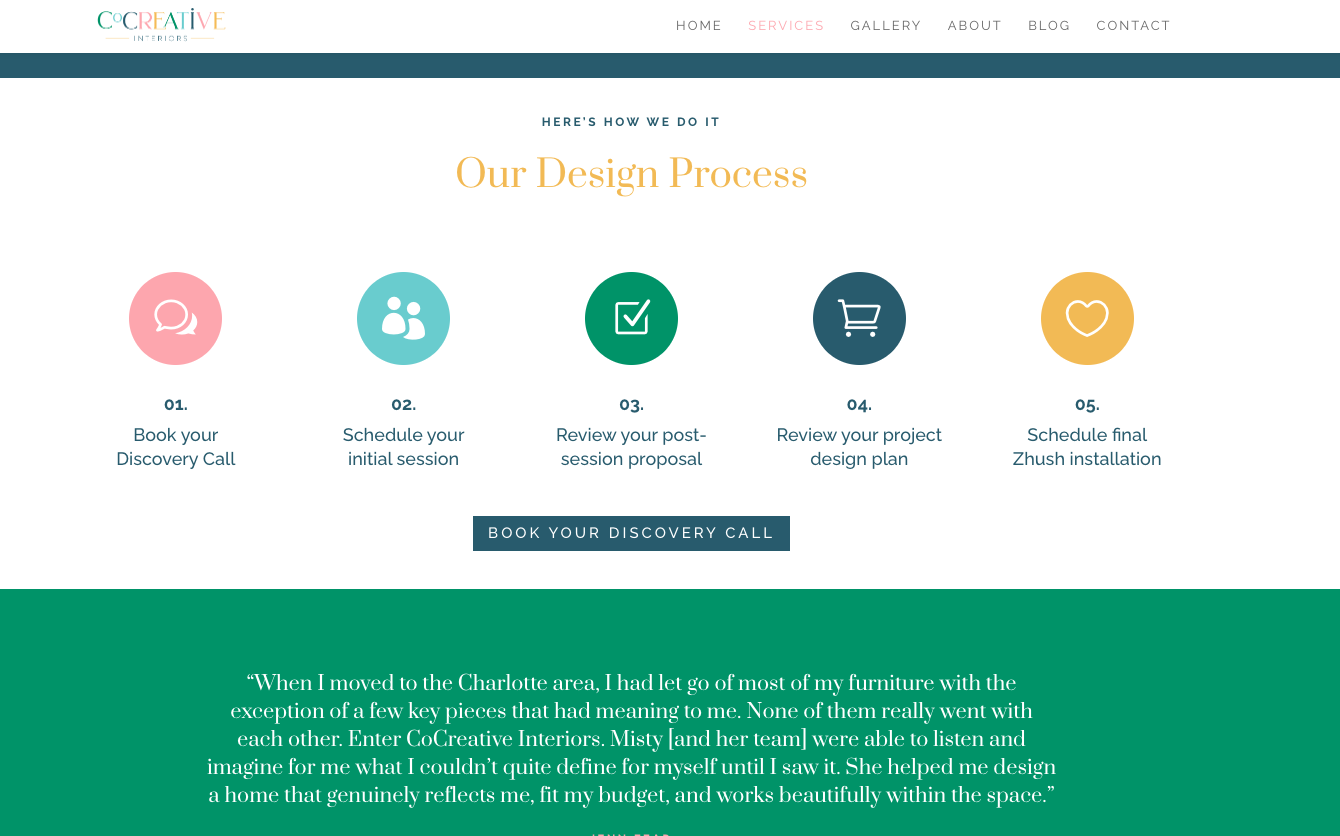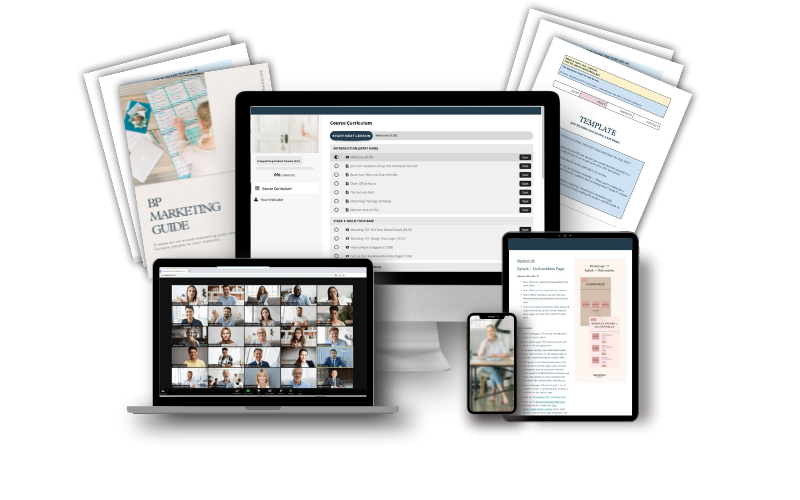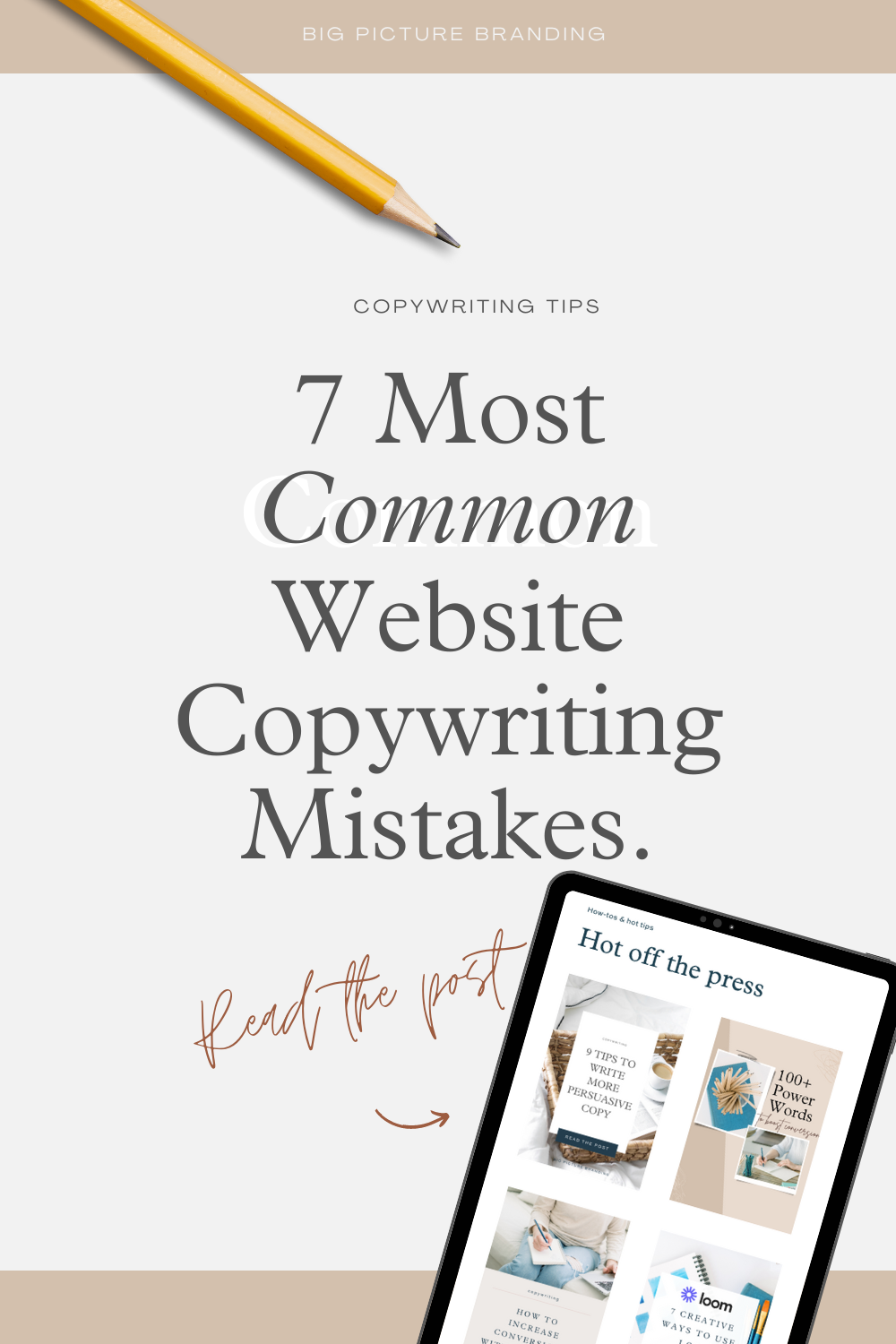Even if you’re not in the market for a complete copy audit or re-write you can still make minor tweaks to the page that will improve how your site performs. I’ve written a lot of copy. I’ve edited a lot of copy. And Grammarly has basically put the infinity sign next to my word count calculator. But over and over again I see the same mistakes being made.
After four years of writing website copy for 50+ clients and teaching my Copywriting Cohort + Mastermind students how to DIY their work, I hear myself repeating the same things: people will cherry-pick the sections they want to read, the headlines need to be skimmer friendly, cut this down and make it bullet points, why should I care? make these headlines active not passive…
So I’ve rounded up the seven most common website copywriting mistakes I see as a professional copywriter (that you’re probably making too.)
7 Most Common Website Copywriting Mistakes
1) Not collecting and using social proof
Social proof builds trust, FOMO, and excitement. While testimonials are the G.O.A.T. when it comes to proving that you can successfully deliver on your promise, client quotes and customer reviews aren’t the only forms of social proof.
If you work in a field where confidentiality is key you can still build social proof by including your educational institution’s logo, association or certification logos, and even a quick numbers tally of how many clients you’ve served, how many years you’ve been in business, geographic locations where your products have been bought, etc.
You also need to introduce proof at the right time. Strategically place proof when introducing your offer, after listing your prices, and right before your “last-chance-to-act” closing argument.
Copywriting Cohort students get my Testimonial Questionnaire Template to help prompt their clients and customers to give specific testimonials, but in general, you want testimonials that pinpoint the true value of a service, initial objections (and how you slayed them), and whether the service resulted in any ROI.
2) Touching the surface when it comes to your audience’s problems
The reason your copy falls flat (or sounds like everybody else) is that you’re not digging deep enough into your audience’s problems. You need to go three layers deep. Donald Miller of Storybrand does an excellent job of dissecting how we experience our problems.
Your copy needs to address the:
-
External problem – the issues sitting on the surface
-
Internal problem – how those problems make us feel (and why that’s an issue)
-
Philosophical problem – why we care/the worldview that motivates us to find a solution
If you’re only speaking to the external problem it signals to your reader that you might only be able to solve part of the problem, but you’re not the complete package. Chances are they want to work with someone who gets them, not someone who maybe doesn’t really understand the big picture ins and outs of the issue.
3) Not giving enough information…or too much information.
If you haven’t taken the quiz Which of the 4 Buyer Types Are You? go ahead and pop that link open in a new tab and take the quiz. We tend to sell the way we like to be sold. That means if you’re The Director, you’re focused on ROI, quick, wins, hate fluff and the top half of the webpage and headlines are all you’re willing to focus on. If you’re The Socializer or The Relator you’re looking for proof, testimonials, customization, or FOMO. If you’re The Thinker (ahem, me) you’re reading all the fine print and leaving no stone unturned – the pros have to outweigh the risks.
Your job is to balance your copy to appease all four buyer types. I teach my C3 students to sweep their copy and layer in the elements that will resonate with each buyer type so that no matter who lands on your page, your copy is stacked and ready to sell.
4) Not addressing your ROI or data points to back up the investment
When you’re just starting out or if you haven’t been collecting testimonials or checking in with your audience post-purchase, addressing ROI (return on investment) feels tricky. (Which is why you need to go back to #1 and start now).
And yes, it would be great if everyone experienced “triple the leads/10X growth/100% gains” but sometimes the ROI isn’t quantitative or even a direct result of your work. Maybe your client gained a better sense of self-worth, got a new job, finally found the time to incorporate movement into their daily routine, or finally feel a sense of relief getting the weight of that thing off their shoulders.
You can use industry data points to back up the value of investing in your offer. I use the stat from Thinkific course platform software that only 5% of students actually finish a course. This is a huge reason I made the C3 program a live course + mastermind. I know my students need that accountability to get their website copy written – whereas a self-paced course would be money down the drain with no return.
5) Skipping the high-level explainer of your process
Outlining your process signals to your audience that you know what you’re doing and it builds trust. This is especially important for higher-priced offers. Your reader won’t see the value in your offer with a bulleted list of deliverables. (And more deliverables don’t necessarily justify a higher price.) You need to succinctly explain how you’re going to do what you’re promising to do and tell them what will be expected of them as well.
Questions swirling around the back of your reader’s head include:
Will I be expected to fill out any questionnaires? What’s the timeline? Will there be a kickoff call? How will I communicate and how will I give and receive feedback? Are there any milestone markers? How is delivery handled and what’s the return policy or guarantee?
A few client examples show two different ways to approach explaining your process:
Client Portfolio: Misty at CoCreative Interiors

Client Portfolio: Barbara at Third Opinion MD

6) Not explicitly telling your reader what to do next (and serving the next step up on a platter.)
Your reader is busy and highly distractable. Every time you make them click through to another page you’re increasing the odds that they bounce off the page. Your CTAs (call-to-actions) need to be crystal clear and tell your readers 1) what to do next (“Book Your Discovery Call”) and depending on the page setup 2) what is about to happen next.
Never assume that someone will eventually make their way to your contact or booking page. Serve it up to them on a platter. At a minimum, every offer on your services page should have its own CTA button leading your reader to the next step in the process.
It’s also a good idea to send your site to a few friends and have them record themselves using your site. Ask them to go through your site and choose one offer to explore, and then book or contact you. As you watch the recording, note any areas where they seemed confused or had to scroll around to find a button or navigation. You want to figure out ways to make using your site as seamless as possible which could mean more way-finding tools like buttons or microcopy (Example: “Click this button here to get started!/Start the 2-step process/Takes 3-minutes to complete”.)
It’s optional, but you can experiment or split-test embedding your contact form into your Services page instead of forcing someone to click over your Contact page. Explicitly tell them to fill out the form below and then give them that form. This way there is no extra effort required on their end and it’s an easy way to guide the horse to water, so to speak.
7) Using a copywriting formula instead of a framework
You’ve probably heard your fair share of copywriting formulas – P.A.S., AIDA, the 9-point formula, the 10-step formula, and even the ridiculously long AICPBSAWN. Copy formulas have existed since the dawn of advertising when businesses had a limited amount of print space to grab their reader’s attention and convince them to go out and buy their brand of laundry soap.
In today’s world, copy formulas are still great for short-form copy – Facebook ads, podcast intros, even headline copy. And they can even be stretched to meet the needs of a sales landing page.
But copywriting formulas don’t work on your website. Why?
Because you’re probably:
-
Selling something more than $20
-
Not selling to a passive audience
Someone landed on your site because they were looking for a solution to a specific problem and are prepared to invest a decent amount of money. They weren’t flipping through a magazine or spacing out to commercials.
In order to convince someone to go with your services or products instead of someone else’s, you’ll need to pull a bunch of different levers at the right time.
You can’t just throw a laundry list of “reasons” and bullet points at them – which is what happens when you use a copywriting formula.
It’s not enough.
You need to build from a copywriting framework in order to connect all the pieces together and create a compelling scene where your reader see themselves as a character on the page. You need a narrative – sales-driving storytelling – to hook them and keep them on the page long enough to hear you out.
Backing it up for a sec…
What’s the difference between a copywriting formula and a copywriting framework?
To use a baking metaphor, formulas are like the ingredients and a framework is the instructions.
Gathering all the ingredients is your starting point but you still need to know how much of something you need, when to add it, and how to mix it all together so it doesn’t deflate as soon as it comes out of the oven.
If you’ve ever baked something and wondered why it still didn’t turn out right, it’s probably because you added an ingredient at the wrong time, didn’t beat the eggs long enough, you quickly stirred the batter instead of folding the ingredients gently, or you didn’t bake it for long enough.
It’s the same with your website copy:
-
You need to introduce your offer at the right time
-
You need to fold in your benefits
-
You need to give them the right amount of information – but not too much (see #3 above)
-
You need to connect everything together in a way that makes sense
-
You need to give them enough time to make a decision
Hey DIY-er. I see you there.
Ready for a proven copywriting framework + copy coaching that works.

Join the Copywriting Cohort Course + Mastermind
The six-week live course + mastermind with built-in accountability so you can finally (re)write your website copy under the wing of a six-figure copywriter (soon to be your Editor-in-Chief).
PIN IT TO SAVE FOR LATER

